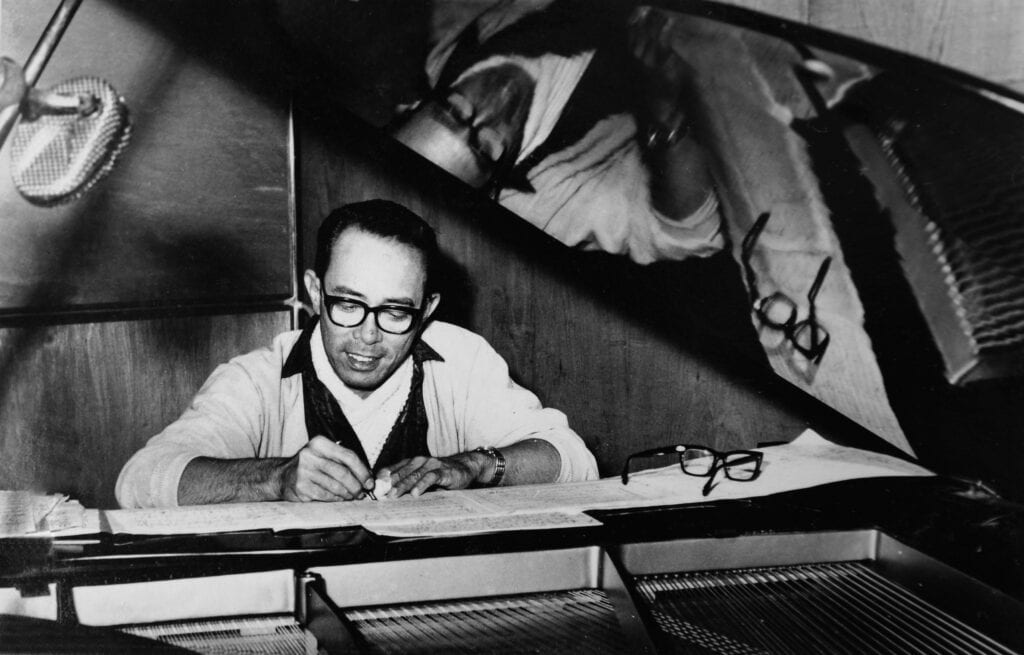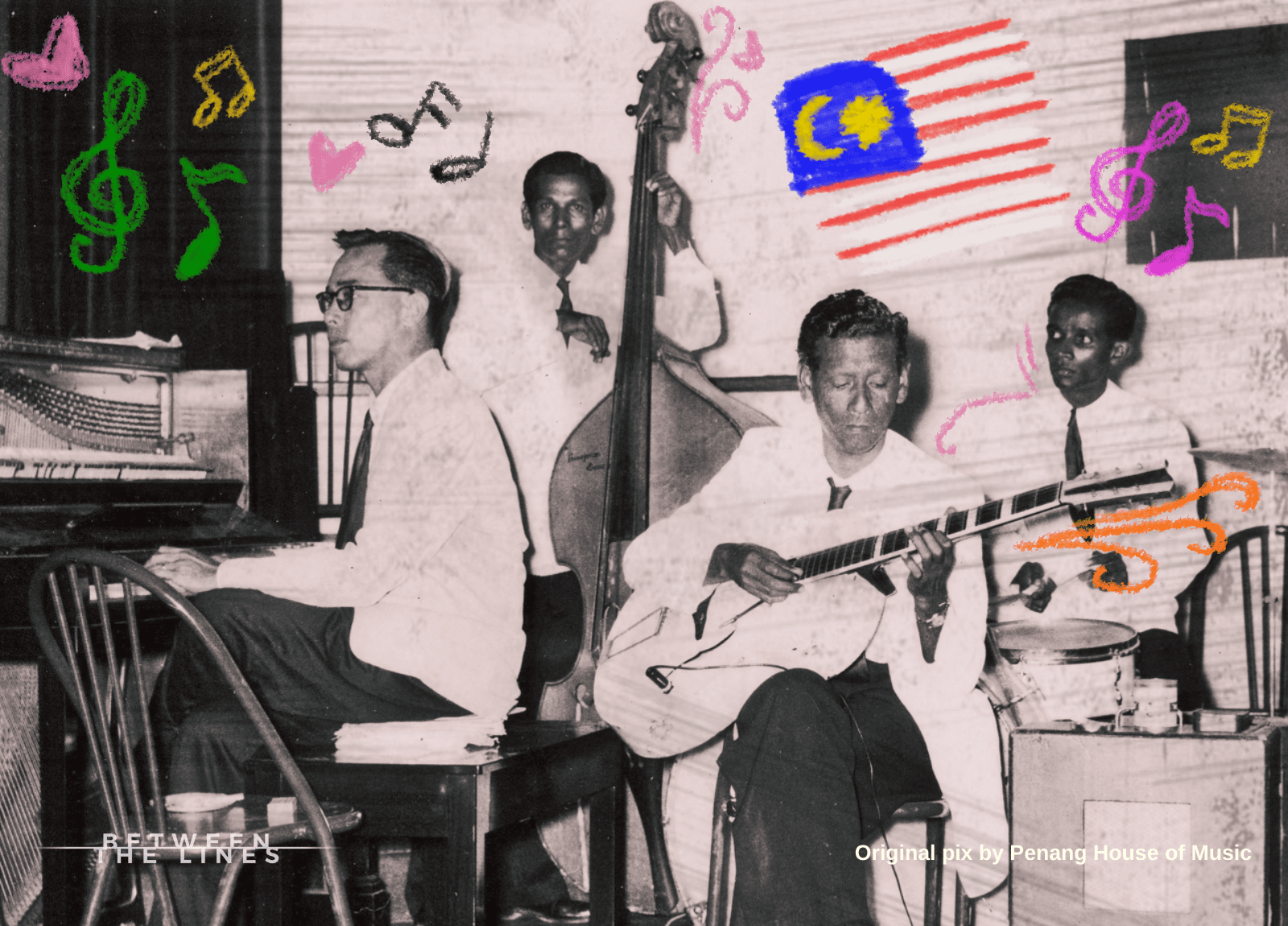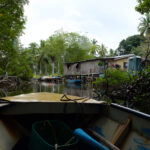Can you tell the colourful, intertwined, multifaceted and multiracial story of Malaysia through its musical history? We can certainly try. As we celebrate 59 years of nationhood, Between The Lines’s EDWARD GOMEZ charts the often overlooked story of composer Jimmy Boyle, our music past and present, and what makes a tune truly Malaysian.
JIMMY Boyle always viewed himself as Malaysian first. His Eurasian heritage, his religion, his status as a Penangite … all the rest came after the fact that he was a son of the soil.
“He pushed this idea of Malaysian music. If you listen to his songs, they have that Malaysian feel. I don’t know what it is, but they’ve got it,” says Penang House of Music (PHOM) director Paul Augustin of the late composer.
Boyle, Augustin says, believed that this country, its places and its people, held secrets and stories.
So as much as he drew from within, Boyle also sought inspiration for his compositions from his daily interactions, the sights and sounds of the cosmopolitan city of his birth, and sometimes, from just sitting still.
“There’s a story about how Jimmy once sat outside a mosque for hours to get the right feel and atmosphere when he was composing. That was when he was writing Kemegahan Negaraku.
“(You know) there’s even a Chinese version of that song, which is orchestrated. You don’t have the gendang or rebana. But you know, instantly, it’s a Malaysian song.”
Kemegahan Negaraku, of course, isn’t just any Malaysian song. It’s the tune that was played on the eve of Malaysia’s birth in 1963.
Yet despite that being true, as is the fact that he wrote over 350 songs during his lifetime, many of them iconic and sung by millions, such as Putera Puteri, Chendering and Jauh Jauh, Boyle is hardly remembered by Malaysians. (*Report continues below)

Augustin says that’s one of the reasons he wanted to draw attention to Boyle’s music; first when he organised the Jimmy Boyle Young Talent Competition way back in 2008 and most recently, through a documentary produced by PHOM.
His affinity for Boyle’s music, though, goes back to well before that; to his school days. Specifically, to May 9, 1971. The day after Boyle, who was a schoolteacher by profession, died, aged 49.
“He didn’t teach me. But I remember that day so clearly, so vividly. It was a sports day, and there were dark clouds looming. It was really, really dark. And at the start of the sports meet, they made the announcement (of Boyle’s death). I don’t know why but I’ve remembered that all my life.
“There are some things in my life that stick and don’t go away … And it was, maybe, the memory of that day that later made me want to look into his work further and see what he had done … I went deeper and deeper. (And found) he was way ahead of his time,” Augustin says.
He (Boyle) pushed this idea of Malaysian music. If you listen to his songs, they have that Malaysian feel. I don’t know what it is, but they’ve got it.
Never Be Out Of The Loop Again
Living with the past
Penang, in the days Boyle grew and then worked as a musician by night and teacher by day, was a vibrant cosmopolis of art, dance, music and song; where bangsawan and Chinese opera troupes staged regular performances, where boria and ronggeng flourished, where the Penang Wireless Society, Malaya’s first broadcast station, operated from a house on Perak Road, and where British officers stationed in the straits state and their partners danced and made merry at socials.
It was also a thriving port that had long drawn people from around the globe and welcomed and absorbed their heritage and culture.
Dr Shazlin Amir Hamzah, a research fellow at Universiti Kebangsaan Malaysia, is convinced that all of the various and disparate elements impacted how Boyle and contemporaries like Ahmad Merican, Ooi Ewe Jin, Ahmad Nawab, and Alfonso Soliano approached music. And how they saw themselves in relation to this land.
But it’s also more than that, she says. Our country is unique, and to understand how those songwriters viewed things and, of course, the resulting songs, one needs to appreciate that this land existed long before independence.
“What we see in our songs is the result of the region being an heir to Hindu and then Buddhist and eventually, Islamic traditions as well as to 3 European colonial systems of government,” Dr Shazlin says.
But what if a songwriter doesn’t draw from that history and instead, on experiences and forms of music unrelated to the Malay archipelago?
What if, for instance, a musician, having grown up on a diet of Muddy Waters and Howlin’ Wolf, composed and performed only blues tunes?
Could their music, then, still be considered Malaysian? (*Report continues below)
Get daily morning briefs on Malaysian news with our Between The Lines newsletter!
From Clarksdale to Seghomban, by way of Johor Bahru
The story of the blues is the story of Black America, and of conflict and inequality.
Drawing on the work songs of the cotton fields, spirituals and real struggle, it is, arguably, the quintessential American musical form, typifying the United States’ difficult-yet-rich heritage.
However, the blues no longer resides solely in Clarksdale, Mississippi, where it’s believed to have been born. Rather, it has since moved on out and beyond. First, up the road to Chicago, then onwards and across the pond to Britain and Europe, and Africa and Asia, setting up residence everywhere.
Julian Mokhtar, guitarist of Johor Bahru-born Blues Gang, Malaysia’s legendary purveyors of the genre, readily acknowledges his love of the blues. Yet he’s also quick to note that although every one of his old bandmates brought their respective blues influences to the party when it was time to write and record, the tunes that came forth didn’t sound anything like the works of their idols. Instead, they felt born and bred in this land.
You can hear it in English language songs like Don’t You Hide, as you can in Khatulistiwa, Oh! Mama, Saya Mahu Kahwin and of course, Apo Nak Dikato, the mega-hit that immediately conjures up images of rural life in 1980s’ Negeri Sembilan.
“When the song was a big hit, and we had to play it 3, 4 times a night, without much variation, I did dislike it. But looking back, it is really quite special. You hear those first 3 opening notes, and you know what song it is,” Julian laughs.
“It’s become Negeri Sembilan’s unofficial anthem, and we’ve joked about that. I remember playing at Sungai Ujong Club and saying, ‘OK, stand up, everyone, we’re going to play the state anthem.”
Folk rocker Azmyl Yunor, a big fan of the band, tells me that he feels the Blues Gang typify Malaysia in the same way Penang’s Alleycats and the late great Malaysian composers did. The form the music takes isn’t important, he says. What is, is the spirit of the song and what’s being said.
That’s what Julian and Blues Gang focussed on. Ditto Jimmy Boyle, P. Ramlee, Alfonso Soliano, Ahmad Nawab and many other Malaysian musicians, past and present.

Azmyl says: “It’s easy to cop out. Write a rock song, and infuse some gamelan, (which will then have) people go, ‘Oh wow, fusion!’ No, it isn’t! And we need to stop pretending it is.
“Our songs are imaginations of ourselves, our films are imaginations of ourselves, our literature, our visual arts, whatever… (they’re all) imaginations of ourselves in this thing known as Malaysia.”
Personally, though, what helped Azmyl identify and imagine himself and his music in relation to this country was not only writing and performing songs in English, but also exploring and expressing himself in the Malay language.
Mind your language
Dr James P.S. Boyle, Jimmy’s son, believes language is crucial to contextualising and understanding Malaysia. In fact, the musician and music scholar suggests that for songs to be considered truly Malaysian, they should ideally be in Malay.
“What I feel binds us is the language, which is Malay. That’s both the lyrical language and the melodic language. You can have different instrumentation in a song, but the melodies of the Malay Archipelago, like the Malay language, are crucial.
“For me, the identity of our music is very much rooted in these 2 things. If you look at Indonesia, it’s very clear that an Indonesian song is in Bahasa Indonesia. There was a clear push towards a unified identity, even in terms of their names. That’s not the case here,” he says.

Crucial, perhaps, but is it always necessary? Must a song be in Malay to be considered truly Malaysian, especially given that Malaysia is racially and culturally diverse?
“(Late Blues Gang bassist) Jim Madasamy’s album, Solla Vanthein, is as much Malaysian as anything else. And it’s a blues record in Tamil,” Blues Gang’s Julian says when I put the question to him.
“The point is Malaysians aren’t just Malay. But by that same token, making a rojak song that incorporates Malay, Cantonese, Tamil, Kadazan and more wouldn’t necessarily be Malaysian either. We’ve had various attempts over the years at developing a so-called Malaysian sound, like balada nusantara and irama Malaysia, but they’ve all been contrived.”
“Our songs are imaginations of ourselves, our films are imaginations of ourselves, our literature, our visual arts, whatever… (they’re all) imaginations of ourselves in this thing known as Malaysia.
A question of identity
The topic of language in relation to Malaysian art and culture is one with many facets.
The general rule, as embodied in Article 152 of the Federal Constitution, clearly emphasises Malay’s status as the official language of the Federation while leaving the door open for other languages to thrive.
Yet so many other plans and policies, both official and unofficial, have complicated the situation. Among them, Malaysia’s public education system, the National Culture Policy, ex-prime minister Dr Mahathir Mohamad’s push for a unified national identity i.e. Bangsa Malaysia, electoral sentiment, political ambition and expediency, and even certain stick-in-the-mud members and ex-members of the administration.
This is perhaps why we’ve had constant debates about the Malaysianess or not of the art that has been produced over 6 decades. Why there was much foaming at the mouth and gnashing of teeth about Jagat’s initial exclusion from the top prize at the 2016 Malaysian Film Festival. Why Alfonso Soliano was criticised for being influenced by jazz. And why Namewee is regularly demonised and vilified.
UKM’s Dr Shazlin agrees, noting too that it’s not right to simplify concepts like Bangsa Malaysia or Malaysian music.
She explains that when one considers policies like Mahathir’s Bangsa Malaysia, what one is really doing is trying to decipher and understand the nation-state concept.
States, she says, are simple to break down as they essentially consist of just 3 things: a country’s laws, its boundaries, and its citizens. But the idea of nationhood is more complex and tied to what political scientist Benedict Anderson termed the imagined community, wherein everyone has a different “imagination” of what their nation is and should be.
“We have to remember that the guys behind the push for independence were from Umno. So the dominant bangsa (race) and identity which was upheld in 1957 was Malay-oriented. I think it’s very important that we remember that … it helps us understand the complexity of identity for Malaysia.”
In no way, however, does appreciating that fact take away from the reality that Ella’s Standing in the Eyes of the World is as Malaysian as Blues Gang’s Apo Nak Dikato, Jimmy Boyle’s Putera Puteri, Poetic Ammo’s Vallanvan, Azmyl Yunor’s Something I Wrote, Yuna’s Crush, John Gaisah’s Ingaton Noh Boros Ku Ngaiand and the music of Namewee.

Singer-songwriter Bihzhu, who has covered Jimmy Boyle’s Chendering, also feels that there ought to be no hard and fast rule for what constitutes Malaysian music. She adds that, generally speaking, unlike the mainstream, there’s more openness in the local independent music scene, where Tamil rap can sit alongside punk and Malay language jazz in harmony.
“In 2020 and 2021, I entered this competition called Anugerah Lagu Indie, which is basically modelled after Anugerah Juara Lagu. The organisers come primarily from the Malay independent scene. So it’s not surprising that the majority of the audience is also from the Malay independent scene.
“Yet for the 1st time in my life, I felt like I was Malaysian enough. They didn’t care that I was Chinese, they didn’t care that my songs were (mainly) in English. That’s the first time I ever felt truly accepted as Malaysian.”
Bihzhu adds: “To me, Malaysian music is music made by any Malaysian in any language spoken by Malaysians.”
Here’s the question, though: could a tune that wasn’t written by someone who was born, brought up and lived here still be considered Malaysian? (*Story continues after image)
Never Be Out Of The Loop Again
This land is my land
Soon after the Umno-led Alliance victory in the first general election in 1955, the then-to-be-independent Malayan government recognised that it needed a national anthem. So, a song competition was organised in the hope of finding the perfect tune.
By July 1957, however, with 514 entries received — including, allegedly, one from the celebrated English composer Benjamin Britten — then prime minister Tunku Abdul Rahman, who sat at the head of the National Anthem Committee, realised that he had a problem. A big one, in fact. None of the tunes passed muster.
Zubir Said, the Sumatran-born composer of numerous film scores and who would go on to write Singapore’s national anthem, Majulah Singapura, was then asked to submit compositions, which he did.
But Tunku was still not satisfied.
That’s when instructions were given to look at the Perak state anthem, which itself was a reworking of the French tune La Rosalie.
The original song, with lyrics by celebrated French poet Pierre-Jean de Beranger, was a popular tune in the Seychelles circa the 19th century. And historical accounts suggest that that’s where and when it was heard by the exiled Sultan Abdullah of Perak; before it spread to the Malay Archipelago, was made Perak’s anthem, and featured in bangsawan performances, films and recordings all across the region.
Tunku was, however, very clear that this new anthem could not be a mere cover of previous versions of La Rosalie. It needed pomp and grandeur, like God Save the King/Queen.
Most importantly, its lyrics needed to resonate.
Enter Saiful Bahri, another Sumatran-born composer and then-head of Radio Republik Indonesia who was invited to pen the lyrics, who took to the task quickly, especially emphasising one line: “tanah tumpahnya darah ku“ (literally, “the land where I spilt my blood” or, more accurately, “the land I shall defend with my blood”).
...Malaysian music is music made by any Malaysian in any language spoken by Malaysians
Critics of Tunku’s decision to opt for the Negaraku (and there have been many over the years) have said that the government should have picked an original composition. That reworking a “pop song” was the wrong move, especially in light of how the tune, or rather the popular tune Terang Boelan, was used to stir up hate during the Malaysia-Indonesian Confrontation.
Yet here’s the thing: despite all the criticism and its arguably inconvenient history, there’s no other song that better embodies the spirit, warts and all, of Malaysia than the Negaraku.
Dr Shazlin agrees. And she points too to how so many people of various ethnicities and backgrounds were involved in the Negaraku’s creation; how the first group rendition of the anthem was by a Tony Fonseka-led church choir and how the responsibility of teaching the new nation the song fell on the shoulders of Jamaluddin Alias and Alfonso Soliano.
“The history of the Negaraku provides a narrative of multi-ethnic interaction and social integration that was already prevalent in Malaysia even before independence … (so it) is actually the perfect archetype of a national symbol. It doesn’t pander to any ethnic group.”
“It’s the same with any other popular culture. You reuse it, you rebrand it, you reinvent it, you re-appropriate it. Many of P. Ramlee’s songs were Hindi-based. Some of them were from Hong Kong.
“Even today, Ariana Grande samples songs from Mary J. Blige. Relax lah.”
That’s how culture works, she says. That’s how songs work. Be it in Malaysia, or anywhere else, whether we’re discussing the national anthem or a song by Jimmy Boyle.
The bottom line is: Malaysia is us, it’s in our songs, in the imagined realities of each one of us, and most of all, in our hearts.

Edward Gomez
EDWARD GOMEZ is Between The Lines' editor-in-chief. He's also an educator, sometime indie musician, and writer of unfinished scripts and stories. He has spent the last 24 years writing about everything from music and movies to education, the environment and politics.
Finally! A newsletter that keeps it nice and short.
At Between the Lines, we summarise and contextualise the most important Malaysian news for you.
Subscribe to our daily morning Email Newsletter for your bite-sized news of all that you need to know in Malaysia and beyond for only RM10 a month/ RM100 a year! First month’s on us.







